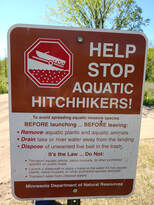|
To keep crayfish for eating, they must be stored alive until your are ready to cook them. They must be kept cool. You can refrigerate them or keep them in the lake.
In the Lake
Fish basket or trap works nicely for this. Just make sure the trap is sealed and tied securely to the dock. This method will also allow for a natural purging period.
Refrigerator or Cooler Method
To store outside of the water, you can use a refrigerator or a cooler with ice. The ideal temperature is 36- 41° F.
Crayfish should not be stored in standing water. DO NOT LEAVE THEM IN THE SUN. To Purge or Not Purge
The concept of purging is a period of 8 – 10 hours where the crayfish are allowed a chance to poop themselves out. That’s what I said. Poop. Some web sites say this is not necessary and some say they still do it. All the websites I researched say the “salt” method is no longer considered necessary.
I don’t worry about it. However, if you intend to “SUCK HEAD” I would plan on a purging period. Sucking Head, is where you suck the juices out of the front half of the crayfish. (I’m sure you understand why I recommend the purge now) This is a very traditional thing to do in the south. You will get a big shot of the Cajun Boil / Crayfish Seasonings. I did it ONCE to have bragging rights. That was enough. If you want to purge, rinse your crayfish until the water runs clear. Then let the crayfish sit for about 8-10 hours, then rinse them again until the water runs clear again. The good news, if you store your crayfish overnight, this should happen naturally. Lake storage will wash the waste away and the final rinse before you cook will clear the waste from the cooler stored crayfish. |


